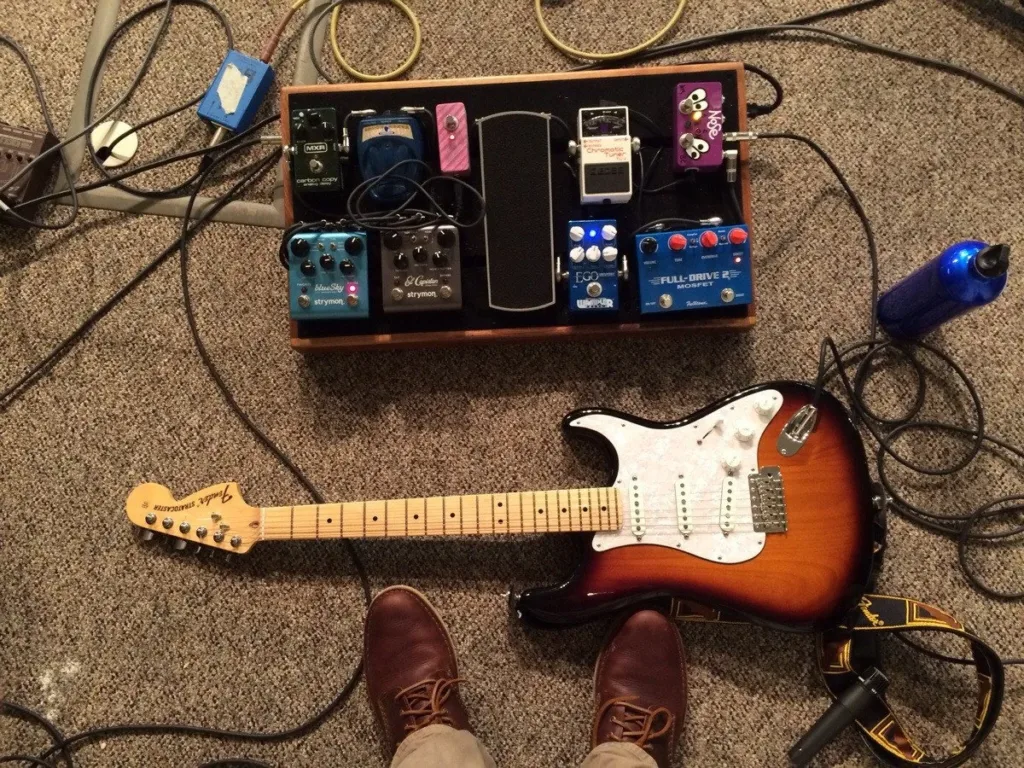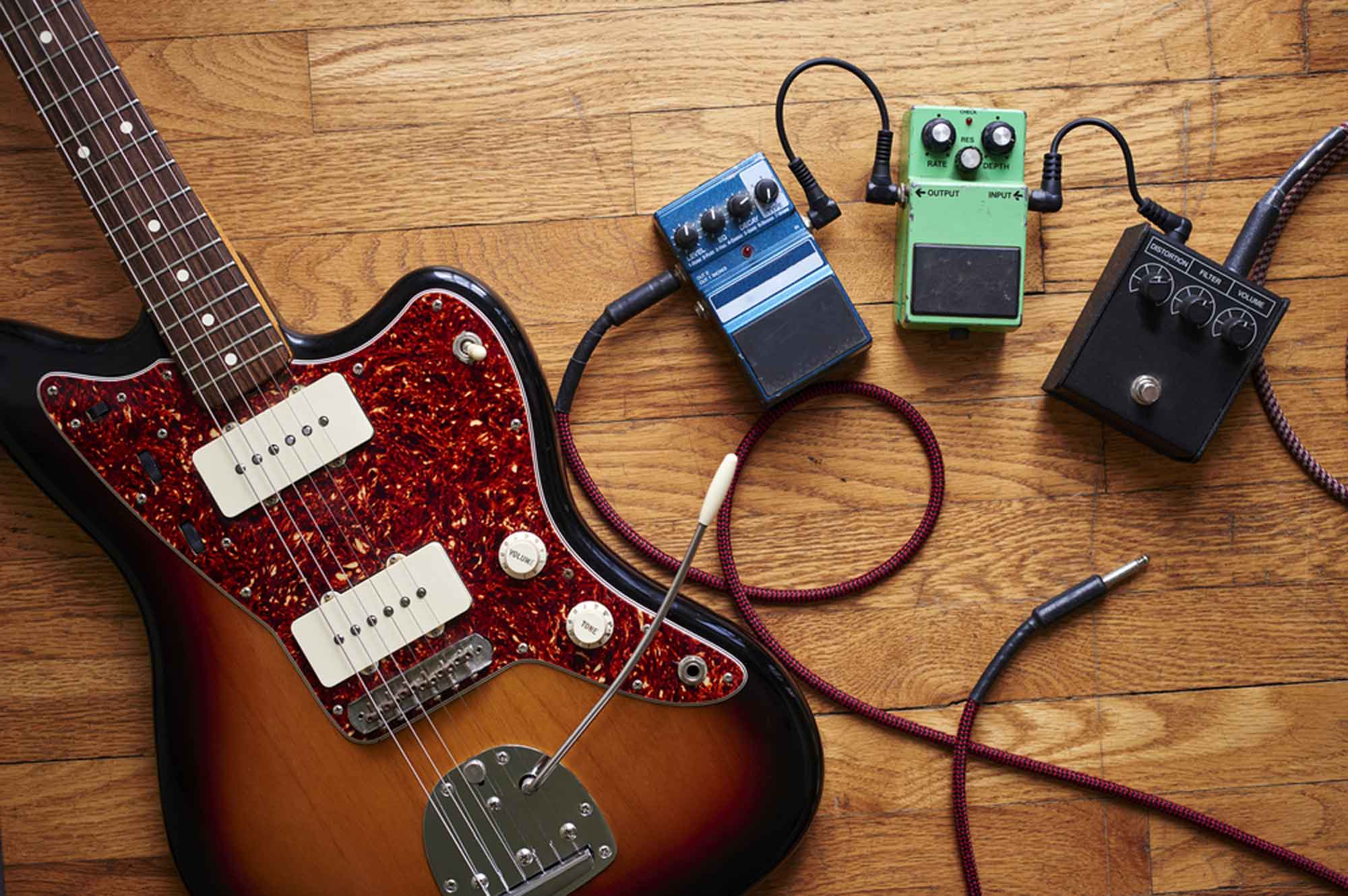Can you use guitar pedals for bass? If you’re a musician, this is a question that may have crossed your mind. As a guitarist myself, I was always curious about using my favorite guitar pedals on my bass. But with so much conflicting information out there, it can be hard to know what’s true and what’s just a myth.
In this comprehensive guide, we’ll dive into the world of using guitar pedals for bass. We’ll explore the potential benefits and drawbacks of using them, as well as provide tips and recommendations for those interested in trying it out. So whether you’re a seasoned pro or just starting your musical journey, keep reading to find out if guitar pedals can elevate your bass playing!
So, can you use guitar pedals for bass?
Guitar pedals can be used for bass, but it is important to understand the limitations and considerations when doing so. While many guitar pedals can work well with bass, there are some that may not produce the desired sound or could potentially damage your equipment.
The key factor to consider is the frequency range of a pedal. Bass frequencies tend to be lower than guitar frequencies, so using a pedal designed specifically for guitar may result in muddiness or loss of low end on a bass. However, there are some pedals that have been specifically designed for both instruments and have a wider frequency range to accommodate both.
Another consideration is the input impedance of a pedal. Guitar pedals typically have an input impedance of around 1M ohms while most basses have an output impedance of around 10k ohms. This difference in impedance can affect how the signal from your bass interacts with the pedal and could result in tone loss or distortion.
Additionally, it’s important to keep in mind that using multiple pedals together can also impact your overall sound quality. It’s recommended to test out different combinations and adjust settings accordingly to achieve the best results.
In conclusion, while it is possible to use guitar pedals for bass, it requires careful selection and understanding of their capabilities and limitations. It’s always best to do thorough research and experimentation before incorporating them into your setup as each instrument has its own unique needs when it comes to effects processing.
Understanding the Differences Between Standard Guitar and Bass Pedals
When diving into the world of guitar and bass effects, it’s essential to grasp the distinctions between standard guitar pedals and bass-specific pedals. Guitar pedals are designed to handle higher frequencies, adding rich textures like distortion, delay, or reverb to your sound. They cater primarily to guitars that produce mid-to-high range tones. While you can technically use these on a bass, they might not deliver the same depth or clarity due to their frequency limitations.
On the other hand, bass pedals are crafted with lower frequencies in mind. These units focus on maintaining the integrity of those deep vibrations crucial for bass lines while adding effects like octave shifts or envelope filters that enhance low-end presence without muddying up your tone. Moreover, some specialized bass pedals include features tailored explicitly for handling sub-harmonic content. This makes them indispensable tools for any bassist looking to refine their sonic palette.
- Guitar Pedals: Designed for higher frequencies.
- Bass Pedals: Tailored for low-end tones.
- Tonal Balance: Different priorities based on instrument output.
It’s fascinating how each type of pedal is engineered so thoughtfully—
ensuring whether you’re strumming chords or laying down groovy baselines,
your instrument’s voice is always distinct and impactful.
The Pros and Cons of Using Standard Guitar Pedals for Bass Guitar
Using standard guitar pedals for bass can be a bit of an adventure, full of both sweet discoveries and some less pleasant surprises. On one hand, many guitar effects pedals offer a wide variety of tones that can really make your bass lines pop. You might find yourself falling in love with the lush reverb from a classic spring pedal or the gritty texture from a distortion unit designed originally for six-string guitars. These whimsical additions can add flair to your playing and even inspire new creative directions.
However, not everything is sunshine and rainbows when it comes to using these pedals on bass. Some effects might strip away the low-end frequencies crucial for holding down the groove in most music genres. Imagine hitting that perfect note only to realize it sounds thin or lacks depth—definitely not what you want during a live set! Additionally, certain guitar-oriented effects may muddy up your sound instead of enhancing it because they’re simply not tailored for lower frequencies.
- Pros:
- Diverse tone options
- Pushing creative boundaries
- Cons:
- Lack of low-end preservation
- Muddiness in overall sound quality
In short, while it’s tempting to raid your guitarist friend’s pedalboard, it’s wise to consider how each pedal affects those rich, resonant bass tones before fully committing them into your setup.
Read also: how long does guitar center take to ship

Exploring Suitable Types of Guitar Pedals That Can Be Used for Bass Guitars
When diving into the world of guitar pedals, it’s important to know that some of these magical boxes work wonders for bass guitars too. Imagine your bass tone as a painter’s canvas; with the right pedals, you can add colors and textures that make it truly unique. Overdrive and distortion pedals are popular choices among bassists looking to add grit and punch to their sound. These effects can transform a clean bass line into something fierce and powerful without losing the low-end thump that’s essential for holding down the groove.
Another fascinating option is modulation effects like chorus or flanger. Picture this: you’re playing a steady rhythm, but it sounds richer and fuller because there’s an underlying shimmer added by your pedalboard setup. A chorus pedal makes each note you play feel lush and expansive, almost like there’s more than one bassist in sync with you. Meanwhile, adding delay or reverb can create space within your music—ideal for genres from ambient to rock where lingering tails enhance emotional expression.
– Overdrive/Distortion: Adds grit, maintains punch
– Chorus: Lush, expansive notes
– Flanger: Underlying shimmer
– Delay/Reverb: Creates space
By carefully choosing which pedals to integrate into your setup, you’ll unlock new dimensions in your sound palette while keeping everything beautifully harmonized.
How to Effectively Use Standard Guitar Pedals for Your Bass: Practical Tips
Using standard guitar pedals for your bass can open up a world of sonic possibilities. But, it’s essential to know how to get the most out of them without compromising your tone. First off, consider compression. A good compressor pedal can help even out your sound and add sustain, which is crucial for maintaining clarity when you’re using effects designed primarily for guitars. Make sure to adjust the compression level so that it complements rather than overwhelms your natural bass tone.
Another key factor is understanding how different effects interact with frequencies unique to bass guitars. For instance:
- Distortion: Many guitar distortions cut low-end frequencies, making the bass lose its punch. Look for pedals that either preserve or enhance lower frequencies.
- Delay/Reverb: These can add depth but must be used sparingly—too much can muddy your sound.
When setting up these pedals in a chain, always place any pitch-altering effects (like octave shifters) before time-based effects (like delays). This arrangement helps maintain note definition and prevents unwanted noise buildup.
Experimentation is part of the fun! While some suggestions are tried-and-true starting points, finding what works best with your specific setup might take some tweaking. Trusting both technical advice and personal preference ensures you’ll discover incredible new sounds tailored just for you.
You may also like: how many piano scales are there
Conclusion: Final Thoughts on Using Standard Guitar Pedals for Bass Guitar
When you think about using standard guitar pedals for a bass guitar, it can feel like you’re venturing into exciting new territory. Guitar pedals are designed to add layers and textures to your sound, but they’re mostly tuned for the frequency range of guitars. Using them with a bass can lead to some unexpected results—sometimes magical, sometimes not so much. For instance, overdrive and distortion pedals often create a crunchy tone that works well on higher-pitched strings but might muddy up the lower-end frequencies typical of a bass.
That said, experimentation is key when integrating these gadgets into your setup. Certain types of effects shine more than others; for example:
- Chorus: This effect adds an ethereal shimmer that’s delightful on both instruments.
- Delay: It provides rhythmic echoes which can enhance your grooves.
- E.Q.: Essential for sculpting your tone precisely and compensating where needed.
However, always be mindful that not all pedals will suit every playing style or musical genre. Consider what kind of vibe you’re aiming for before diving in headfirst.
Final thoughts? Stepping outside traditional setups by using standard guitar pedals with a bass opens up limitless possibilities. The true magic lies within finding combinations that resonate with you personally while enhancing whatever piece you’re working on at the moment.

